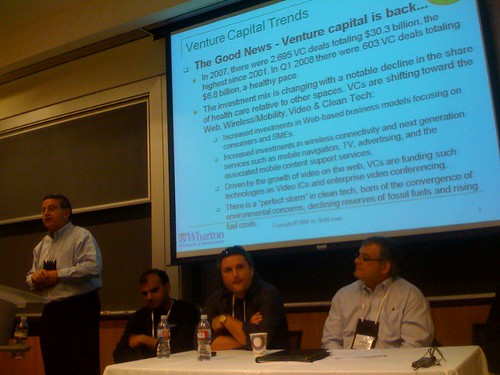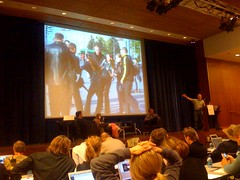The May 2008 issue of Fortune Small Business contained a breathless article on the "Net Promoter Score," which is defined thusly in the article:
"First, ask you customers to rate you on a scale of 0 to 10 based on the question ‘How likely is it that you would recommend this company to a friend or colleague?’ Then sort the responses into three groups: promoters (9’s and 10’s), passives (7’s and 8’s), and detractors (0’s through 6’s). The percentage of promoters minus the percentage of detractors equals your score. A company with 75% promoters and 15% detractors, for example, would have an NPS of 60."
Net Promoter Score (NPS) was vaulted into the mainstream in a 2006 book entitled "The Ultimate Question" by former Bain & Co. partner Fred Reichheld.
Is NPS a panacea? The data is mixed. On one hand, Fortune reports that "the average US company has an NPS of about 15" and telecom/cable companies are "real dogs" with an NPS of -4…yes, NEGATIVE four. So from that perspective, things seem to synch with conventional wisdom (and personal experience). On the other hand, much question has been given to the statistical validity of NPS.
In particular, a heated conversation thread hosted by the Journal of Marketing notes the following:
"1) We did not find Net Promoter to be a good predictor of growth at all
when attempting to replicate Reichheld’s methodology. We find this
quite strange given the overwhelming evidence Reichheld reports
regarding Net Promoter’s linkage to growth.
2) The most troubling finding from our research, however, is that we
found very strong evidence of research bias in the research reported by
Reichheld in support of Net Promoter. In particular, we were able to
replicate a subset of Reichheld’s reported data for his best case
scenarios and compare it to a metric he claimed was examined and found
to have a 0.00 correlation to growth, the ACSI. Our findings clearly
show that when using Reichheld’s own data, Net Promoter wasn’t superior
to the ACSI. It is virtually impossible to imagine a scenario other
than research bias as the cause of this finding.
This is a VERY SERIOUS problem."
Going back to the Fortune article, they interviewed 20 companies, all of which had positive things to say about NPS, with key note given to its simplicity and ability to highlight particular customer issues.
But I’d be very interested in hearing from you. What have been your (or your organization’s) experience with Net Promoter. Best thing since sliced bread, snake oil, or a mixed bag? Or, put another way:
"How likely is it that you would recommend the metric of Net Promoter Score to a friend or colleague?"
Thoughts?










